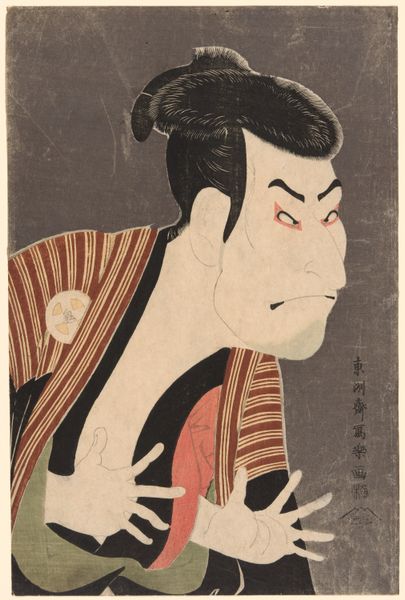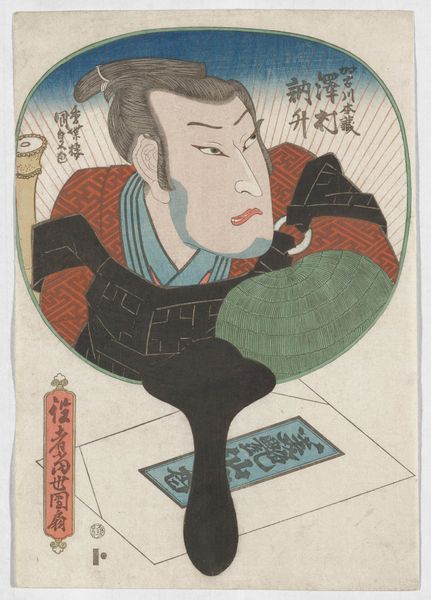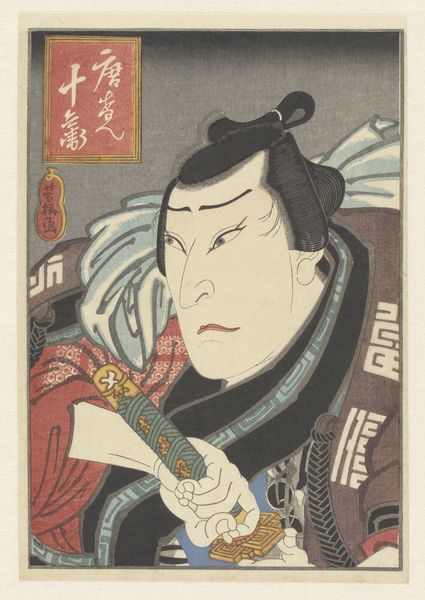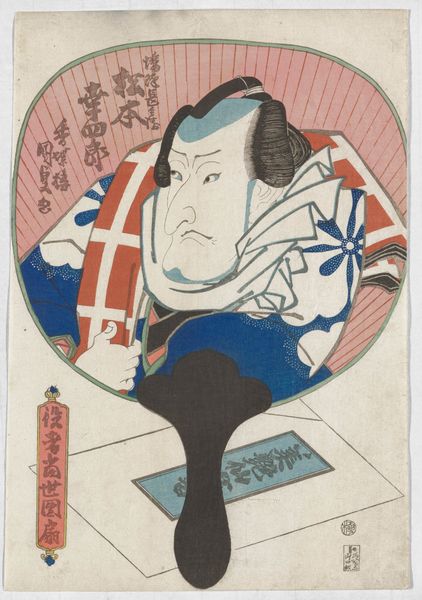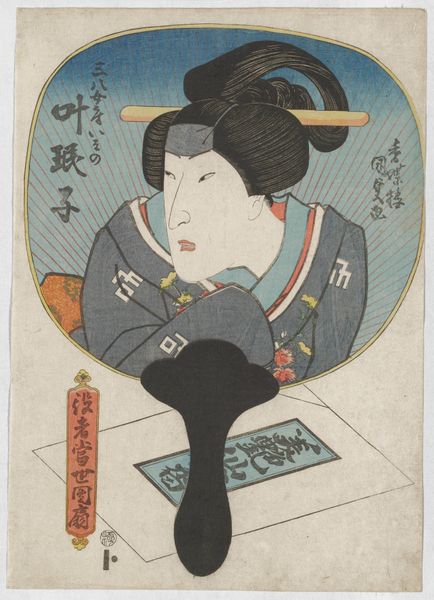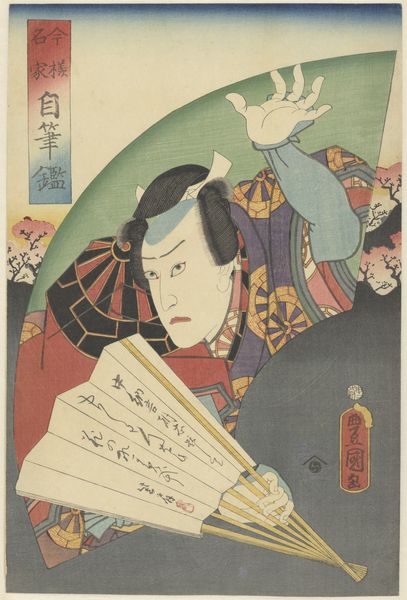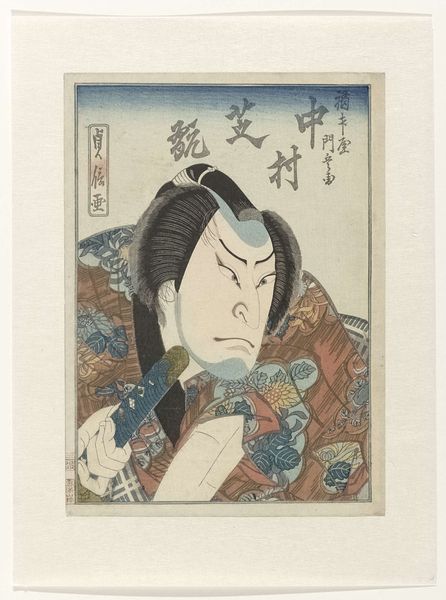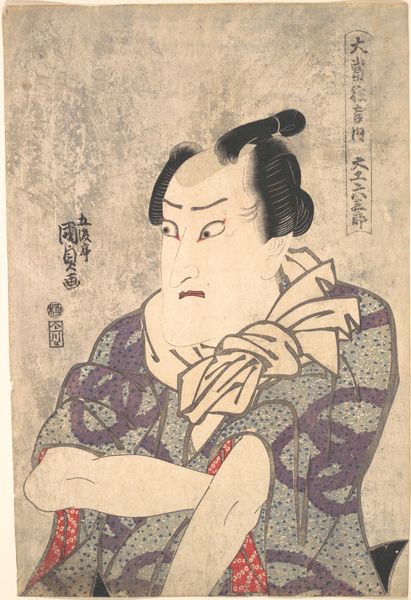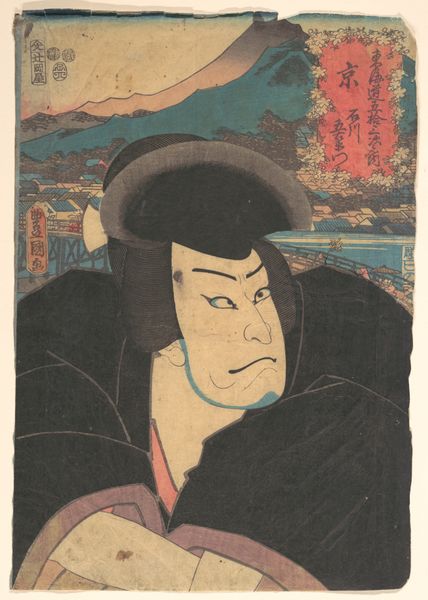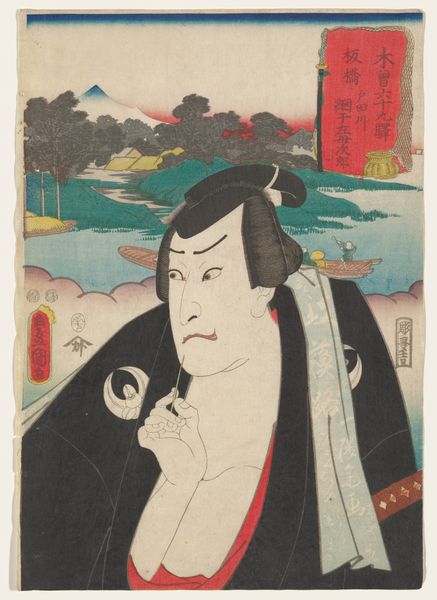
print, ink, woodblock-print
#
portrait
# print
#
caricature
#
asian-art
#
caricature
#
ukiyo-e
#
japan
#
figuration
#
flat colour
#
ink
#
woodblock-print
Dimensions: 14 1/2 × 10 1/8 in. (36.83 × 25.72 cm) (sheet, vertical ōban)
Copyright: Public Domain
Curator: This woodblock print, dating to around 1833, is titled "Actor Iwai Tojaku I as Shirai Gonpachi" and was created by Utagawa Kunisada. I’m immediately struck by the odd placement of the fan. The actor appears behind it, with what looks like a blank check sitting just beneath. Editor: The tension created between the stark white paper of the cheque or document and the dense black ink of the fan is palpable. Then we have the very clean radial pattern of lines on the background and those strong, contained swatches of red and blue—it’s an artwork about shape, plane, and graphic intent. What else can you tell me? Curator: It's interesting that you focus on that void in the lower half. Consider the implications: Kunisada, known for his depictions of Kabuki actors, wasn't simply documenting performances, he was responding to and participating in a thriving urban culture fueled by conspicuous consumption and, shall we say, the theater of daily life. The tools for participating are literally on display. Editor: That may be so, but for me, it’s the flatness that sings. Kunisada masterfully avoids traditional shading; he outlines everything. His bold use of outline helps to define shapes with incredible precision. He plays with visual paradox through shape, forcing the eye to question volume without actually offering a clear construction of three-dimensional space. It challenges assumptions about perspective, and is much more radical and clever than many assume. Curator: And think of the collaborative work behind its creation. Each color necessitates a separate block carefully carved by artisans working with specialists who prepared and finished the materials, including the paper itself, the ink, the pigments… So many steps involving the labor of other artisans working towards an ephemeral theater event. This object connects to an extensive network of production, distribution, and spectatorship within a specific cultural and historical context. Editor: Fair enough. However, looking past context and zeroing in on what the image presents is deeply fulfilling too. Those strong formal geometries combined with muted washes of color speak for themselves. Curator: Ultimately, considering both helps us better understand and appreciate the many lives this single print had, and still has. Editor: Absolutely. It's that careful negotiation between what’s readily apparent and the web of meanings beneath the surface that is ultimately so enthralling.
Comments
minneapolisinstituteofart almost 2 years ago
⋮
Related to the play "Mitsu ichō gozonji no Edo-zome" 三銀杏御存地染, performed at the Nakamura Theater, 1833, fifth month. Utagawa Kunisada’s bust portraits from the 1820s and 1830s typically show actors against a plain background accompanied by poems composed by the portrayed actors. Here, the portrait is fan shaped, allowing the image to be cut out and affixed to an actual fan. This series is also an early example of product placement, as a packet of Bien Senjokō face powder appears at the bottom of each print. It seems that the prints were delivered together with the powder or that the producer of the powder paid for some of the production costs of the print.
Join the conversation
Join millions of artists and users on Artera today and experience the ultimate creative platform.
